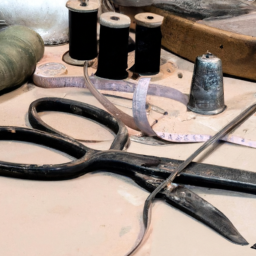
History of Sewing Timeline
Sewing originated in the Paleolithic era. Early humans used animal bones, ivory, and slivers of antler to create needles. They sewed together animal hides to make clothing, footwear, and shelters.
The Egyptians began using palm thorns as needles and sewing with animal sinew for various textile applications, including clothing, sails, and funerary wrappings.
The Chinese invented the needle with an eye, enabling more efficient and easier sewing. They used silk threads and created beautiful embroidery designs.
The first mechanical sewing machine was invented in Italy by a tailor named Barthelemy Thimonnier. The machine used a single-thread chain stitch and was capable of sewing straight seams.
The sewing machine gradually improved with inventions such as the lockstitch mechanism and the introduction of the foot treadle for powering the machine. This revolutionized the textile industry and made mass production of clothing possible.
Electric sewing machines were introduced, greatly enhancing speed and efficiency. Sewing patterns became widely available, enabling home sewers to recreate the latest fashion trends.
Sewing remains popular as both a practical skill and a creative outlet. While machines dominate large-scale production, many individuals still enjoy sewing by hand or with modern computerized machines.




